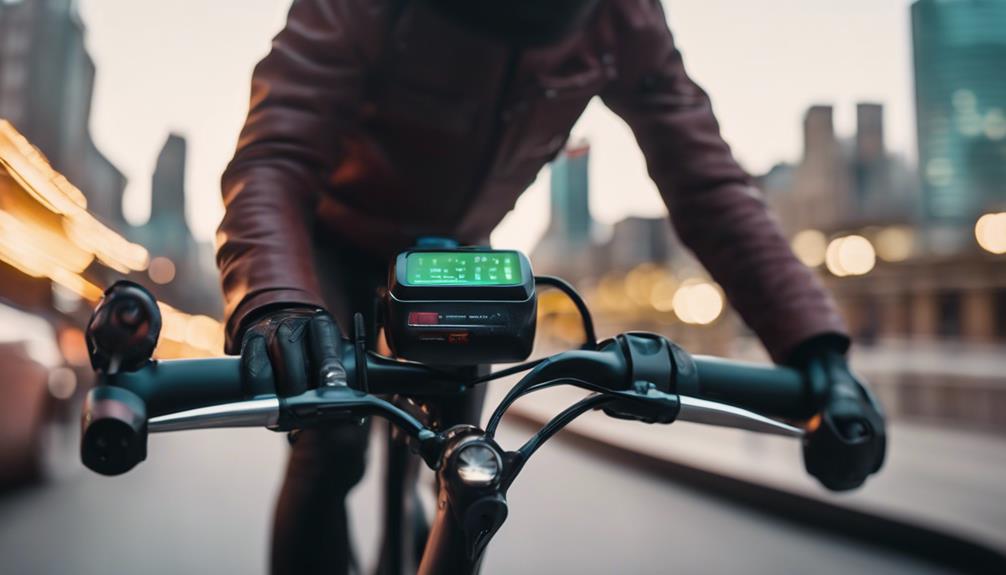As cycling continues to gain popularity around the globe, the issue of bike theft has also risen significantly. In urban areas, where the number of bicycles increases, so does the risk of theft. According to a report from the National Bike Registry, over 1.5 million bicycles are stolen each year in the United States alone. To protect your investment, understanding the importance of a reliable bike lock is essential. Among the various options available, bike chain locks stand out for their versatility and strength. This article provides a comprehensive overview of bike chain locks, including their types, advantages, and tips for effective usage.
Understanding Bike Chain Locks
Bike chain locks are security devices designed to secure your bicycle to a fixed object, preventing theft. They are made from sturdy materials, typically steel, and consist of a series of links connected together, which can be wrapped around the bike and a secure anchor point. The lock mechanism at one end allows for easy locking and unlocking.
Why Choose a Bike Chain Lock?
Bike chain locks offer several advantages that make them a popular choice among cyclists:
- Flexibility: The long, flexible design of chain locks allows you to secure your bike to various objects, from bike racks to trees.
- Portability: Many chain locks come with carrying options, such as a bag or bracket, making them easy to transport.
- Security: High-quality chain locks provide excellent resistance against cutting and sawing, especially when they are made of hardened steel.
- Versatility: Chain locks can be used to secure multiple bikes or other items, making them ideal for shared spaces.
Types of Bike Chain Locks
Bike chain locks vary in design, materials, and security features. Here are the primary types:
1. Standard Chain Locks
Standard chain locks consist of a series of links and a locking mechanism. They come in various lengths and are typically made from hardened steel. The longer the chain, the more versatile it is for securing your bike.
2. Heavy-Duty Chain Locks
These locks are designed for maximum security and are ideal for high-risk areas. Heavy-duty chain locks typically feature thicker links and a more robust locking mechanism, providing superior resistance to theft.
3. Chain and Padlock Combinations
Some chain locks come with a separate padlock. This allows you to replace the padlock if it becomes damaged or compromised. It’s essential to choose a high-quality padlock to ensure the overall security of the chain.
How to Choose the Right Bike Chain Lock
Selecting the right bike chain lock depends on various factors, including your budget, the value of your bike, and where you plan to use it. Here are some tips to consider:
- Consider the Length: Choose a chain lock that is long enough to secure your bike to a fixed object. A length of at least 3 feet is generally recommended.
- Check the Thickness: Thicker chains are more difficult to cut. Look for chains that are at least 10mm thick for optimal security.
- Look for Security Ratings: Many chain locks come with security ratings from independent testing organizations. Look for locks rated 7 or higher on a scale of 1-10 for a good level of security.
- Choose a Reputable Brand: Investing in a well-known brand can often ensure better quality and reliability.
Effective Usage of Bike Chain Locks
Even the best bike chain lock can be ineffective if not used correctly. Here are some tips for ensuring your bike is secure:
- Lock Your Frame and Wheels: Always secure both the frame and at least one wheel to a solid object. This prevents thieves from easily removing your bike’s wheels.
- Use Multiple Locks: Consider using a combination of different types of locks (e.g., a U-lock and a chain lock) for added security.
- Secure in Well-Lit Areas: Always lock your bike in well-lit, busy areas to deter thieves.
- Remove Accessories: Take any easily removable items, such as lights or bags, with you to reduce the risk of theft.
Common Mistakes to Avoid
To maximize the security of your bike, avoid these common mistakes:
- Using Inadequate Locks: Don’t settle for cheap locks; invest in high-quality options that provide better protection.
- Locking to Insecure Objects: Avoid locking your bike to objects that can be easily cut, broken, or lifted.
- Not Locking Your Bike: Always lock your bike, even if you’re just stepping away for a moment.
Case Studies: Real-Life Examples of Bike Theft
Understanding how bike theft occurs can help cyclists take better precautions. Here are a couple of case studies:
Case Study 1: The Urban Cyclist
A cyclist in a busy urban area left their bike locked to a bike rack using a basic cable lock. While in a coffee shop, a thief used a pair of bolt cutters to easily cut the lock and steal the bike. The cyclist learned the hard way that a more robust chain lock could have deterred the theft.
Case Study 2: The Bike Commuter
A bike commuter invested in a heavy-duty chain lock and secured their bicycle in a well-lit area. Despite the high traffic of pedestrians, the bike remained safe throughout the day. The cyclist’s choice of a reliable lock paid off, showcasing the effectiveness of proper bike security measures.
Conclusion
Bike chain locks are an essential tool for any cyclist looking to prevent theft and protect their investment. By understanding the different types available, how to choose the right lock, and the best practices for usage, cyclists can significantly reduce the risk of their bicycles being stolen. Remember to invest in a quality lock, secure your bike correctly, and remain vigilant. Ultimately, a little preparation can go a long way in ensuring that your biking experience remains enjoyable and theft-free.
With the right knowledge and tools at your disposal, you can confidently navigate the urban landscape, knowing that your bicycle is well-protected against potential threats.
